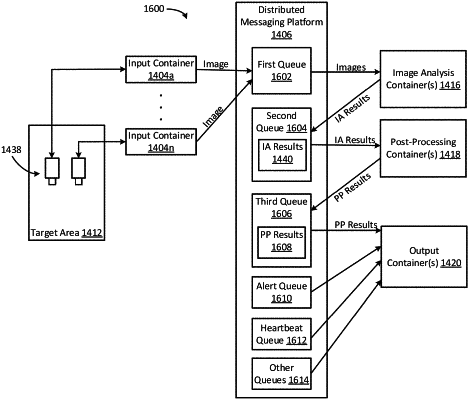| CPC G06V 10/94 (2022.01) | 30 Claims |

|
1. A system comprising:
a plurality of processors; and
a plurality of memories including program code that is executable by the plurality of processors for causing the plurality of processors to:
execute a distributed messaging platform configured to receive a plurality of images of a target area and store the plurality of images in a first queue, the plurality of images being captured by a plurality of cameras;
execute a first container configured to:
receive the plurality of images from the first queue;
apply an image analysis model to the plurality of images to generate an image analysis result; and
transmit the image analysis result to the distributed messaging platform, the distributed messaging platform being configured to receive the image analysis result and store the image analysis result in a second queue;
execute a second container that is separate from the first container, the second container being configured to:
receive the image analysis result from the second queue;
perform a post-processing operation on the image analysis result to generate a post-processing result; and
transmit the post-processing result to the distributed messaging platform, the distributed messaging platform being configured to receive the post-processing result and store the post-processing result in a third queue; and
execute one or more output containers that are separate from the first container and the second container, the one or more output containers being configured to:
receive the post-processing result from the third queue;
generate an alert notification based on the post-processing result; and
transmit the alert notification to one or more recipient devices.
|